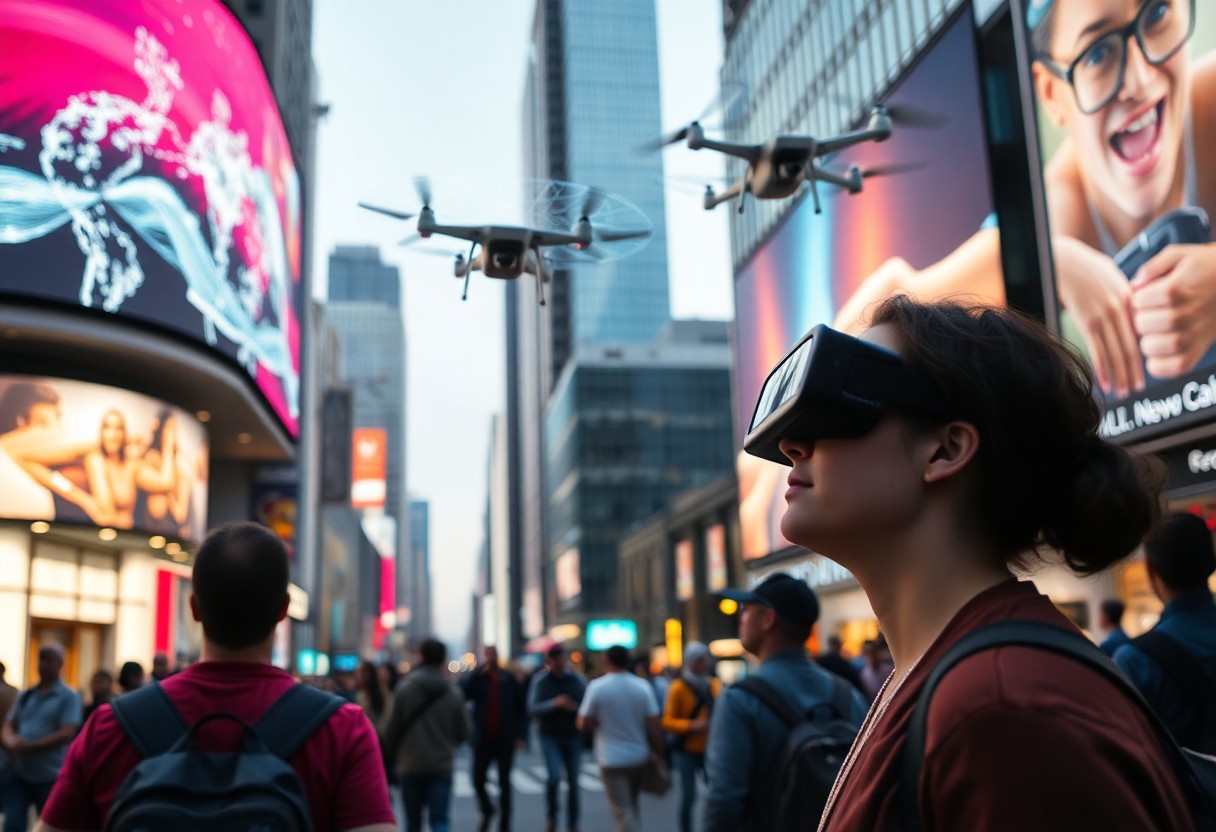Immersive technology is transforming how you interact with the world around you. From virtual reality to augmented experiences, these advancements are shaping new ways to engage with information, entertainment, and social connections, pushing the boundaries of what you once thought was possible.
The Evolution of Immersive Technologies
The journey of immersive technologies has been marked by rapid advancements and revolutionary shifts, shaping how you interact with digital environments. From the early days of virtual reality in the 1960s, with devices like the Sensorama, to contemporary applications in entertainment, education, and training, immersive tech has transformed significantly, expanding its capabilities and accessibility. Key milestones include the introduction of the Oculus Rift in 2012, which brought virtual reality to mainstream attention, and the release of augmented reality applications like Pokémon GO in 2016, showcasing the potential of blending digital elements into the real world. These breakthroughs laid the groundwork for today’s diverse immersive experiences. Influential companies driving this evolution include Oculus (now part of Meta), Sony with PlayStation VR, and Google’s ARCore. Oculus, with its flagship Rift and Quest series, has democratized VR access, while Sony leverages its gaming platform to enhance immersive experiences. Google’s ARCore facilitates effortless AR development, enabling developers to create innovative applications. Smaller studios like Within and Magic Leap contribute fresh ideas that enrich the landscape and challenge established norms, creating an ecosystem ripe for exploration and collaboration.

The User Experience Revolution: How Immersive Tech Changes Interaction
Immersive technology is reshaping your interactions with digital environments, enhancing engagement and enabling more natural connections. By utilizing virtual reality (VR), augmented reality (AR), and mixed reality (MR), you can experience digital content in ways that feel intuitive and realistic. This evolution not only captivates your senses but also facilitates deeper comprehension and retention of information, making your digital experiences more impactful and personal. Immersive tech significantly enhances accessibility, allowing you to engage with digital content regardless of physical limitations. Innovations in VR and AR enable adaptive interfaces and assistive technologies that cater to diverse user needs. VR applications offer alternative communication methods for individuals with speech impairments, fostering inclusion in shared experiences. Digital interactions are becoming profoundly more intuitive and emotionally resonant through immersive technologies. You are not merely consuming content; you’re moving through it, feeling it, and interacting with it in lifelike ways. By leveraging biometric data and sensory cues, these experiences can adjust in real-time to reflect your emotional state, creating personalized journeys. Companies like Oculus and Magic Leap are pioneering this shift, creating platforms that respond dynamically to your emotions and actions, fostering empathy and emotional engagement that traditional interfaces lack.
Industries Transformed: Immersive Tech Applications
Immersive technology is reshaping various industries by enhancing productivity, engagement, and outcomes. From healthcare to education, businesses are integrating virtual and augmented reality into their operations, leading to innovative solutions and improved experiences. Virtual reality therapy is revolutionizing patient care, offering new avenues for treatment. This approach is particularly effective for managing pain, anxiety, and PTSD, allowing patients to confront their fears in controlled environments. Studies indicate that VR can significantly reduce symptoms, showcasing its potential as a viable alternative or complement to traditional therapies. In education, immersive technology creates dynamic learning environments that enhance student engagement. Interactive simulations allow you to explore complex subjects like anatomy or history in three dimensions, making learning more vivid and impactful. Research shows that students retain information better when they actively participate in their learning. Platforms like Google Expeditions allow virtual field trips to ancient civilizations or deep ocean exploration, enriching understanding through firsthand exploration. This active learning approach captures interest while encouraging collaboration and critical thinking, vital skills for the modern world.
The Ethical Implications and Challenges Ahead
Immersive technology raises ethical questions that demand attention as it becomes more integrated into daily life. Issues ranging from data privacy to user consent pose challenges that require careful navigation. In immersive environments, user data collection increases exponentially, leading to significant privacy concerns. Sensors and tracking technologies gather sensitive information about your physical movements, preferences, and interactions. This data can be exploited if not adequately protected, leading to breaches of privacy with severe consequences, including identity theft and unauthorized surveillance. The immersive nature of these technologies can blur the boundaries between reality and virtual experiences, leading to profound psychological effects. Users may struggle to distinguish between real-life interactions and virtual engagements, potentially impacting their mental well-being. Cases of disorientation and addiction to virtual environments have surfaced, highlighting the need for awareness regarding emotional consequences of prolonged exposure. Research from Stanford University points to the ‘Proteus Effect,’ where individuals adapt their behaviors and attitudes to their virtual avatars, influencing real-world interactions.
The Road Ahead: Predicting the Next Wave of Immersive Innovations
The future of immersive technology is filled with potential disruptions that can reshape industries. As user experiences become more sophisticated, you can expect advanced spatial audio, haptic feedback, and enhanced interactivity to dominate the landscape. Innovations in hardware and software are expected to make virtual and augmented reality more accessible, paving the way for broader adoption across education, gaming, and healthcare. Emerging trends point toward seamless integration of immersive tech into everyday life, with advancements in wearable devices enhancing mobility through more interactive experiences. AI is set to significantly enhance immersive technologies, creating adaptive and personalized experiences by analyzing user behavior and optimizing interactions within virtual environments. Platforms like Google’s ARCore and Apple’s ARKit are leveraging AI for spatial recognition and real-world context, fostering collaborative environments that allow teams to brainstorm and prototype in shared virtual spaces, bringing ideas to life in unprecedented ways.
Summing up
Your exploration of immersive tech reveals a rapidly evolving landscape that offers endless possibilities for enhancing experiences across various sectors. By embracing innovations like virtual and augmented reality, you position yourself at the forefront of this transformation. Staying informed and adaptable will empower you to leverage these technologies effectively, shaping the future of interaction and engagement in your personal and professional endeavors.
